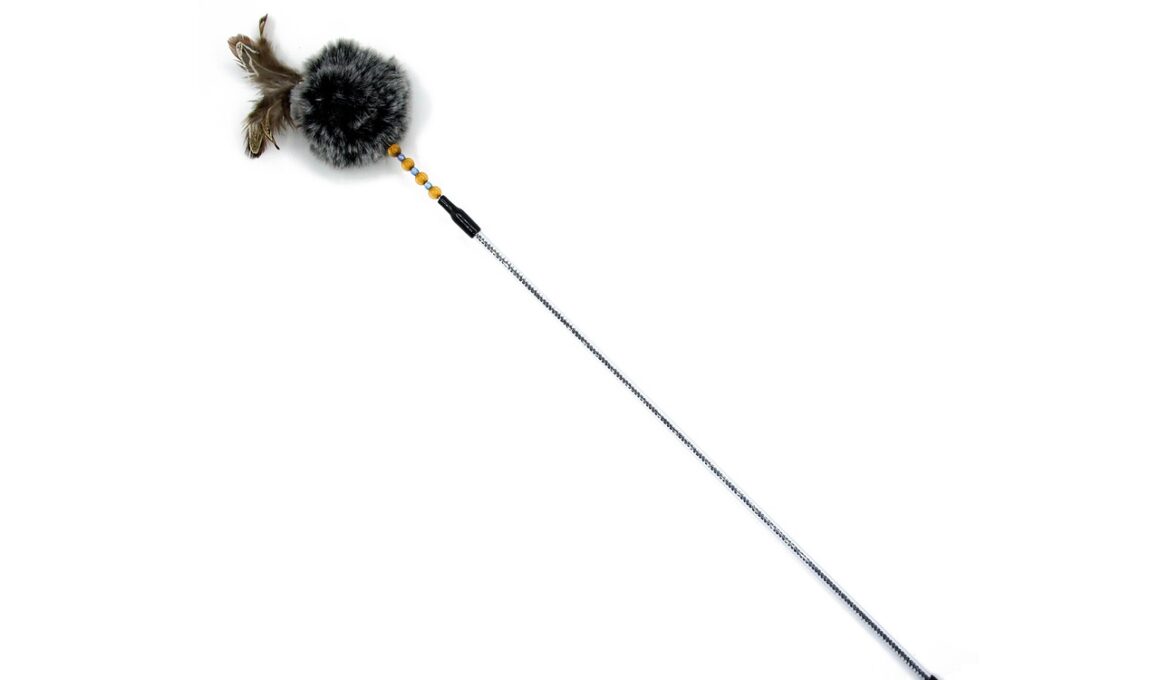Best Materials for Durable and Safe Target Sticks for Cats
When it comes to training cats, target sticks are indispensable tools that can significantly enhance your ability to guide their behavior effectively. Choosing the right materials is crucial to ensure that target sticks are not only durable but also safe for your feline friends. Common options include lightweight yet sturdy materials like bamboo or plastic, which offer both flexibility and resilience. Bamboo stands out due to its eco-friendly nature, while plastic can be molded into various shapes. However, the safety of these materials is paramount, so it’s important to select non-toxic versions to avoid any health hazards. Consider the texture of the material; a smooth finish will prevent injuries or scratches if your cat accidentally comes into contact with the stick. Remember to prioritize your cat’s comfort during training sessions. It’s also wise to check for potential breakage points that could pose risks, ensuring the sticks can withstand enthusiastic swats and playful interactions. With the right selection of materials, you can create a safe and effective training environment that promotes learning through positive reinforcement, building trust between you and your cat.
In addition to choosing the right materials, the design of your target sticks plays a vital role in their functionality and effectiveness in training. Opt for a design that incorporates a soft tip made from fabric or foam. This not only minimizes the risk of injury but also makes it more appealing for your cat to engage during training exercises. Long, flexible rods provide a better reach while maintaining balance; avoid overly heavy designs that could easily tire your wrists during extended play. The length of the stick should be appropriate for your training environment—consider compact designs for smaller spaces, and longer ones for more open areas. Additionally, some target sticks come with adjustable lengths or detachable attachments, which allow you to customize them based on your training needs or your cat’s size. Look for sticks that are easy to handle, allowing quick maneuvers to keep your cat interested and focused. Remember, a well-designed target stick can enhance your training sessions, making them more fun and productive for both you and your furry companion.
Benefits of Using Target Sticks in Cat Training
Utilizing target sticks in training sessions with your cat introduces a structured approach that encourages positive reinforcement. Target sticks work by directing your cat’s attention to specific points in response to cues, enabling them to follow a desired behavior effectively. This method not only aids in teaching basic commands but also enriches your cat’s daily routine with stimulating activities that challenge their instincts. Furthermore, target sticks are tools that can facilitate agility training, allowing cats to test their physical abilities creatively. Over time, consistency in your training with target sticks will help to strengthen the bond between you and your feline companion. As mutual understanding grows, your cat may become more attentive during sessions, leading to faster learning curves. The engaging nature of target sticks may reduce behavioral issues often associated with boredom or lack of stimulation. Therefore, incorporating these tools into your cat training regimen can yield returns in both behavioral development and relationship building. Ultimately, the objective is to create a fun, interactive experience that keeps your cat engaged and motivated to learn new skills.
As you continue to navigate the world of cat training, it’s beneficial to explore the versatility of target sticks. An array of various attachments can be added, including feathers, bells, or small toys, turning a simple straight stick into an interactive and engaging device. This element of novelty encourages your cat to explore and enjoy the process of learning. Each attachment provides sensory stimulation, promoting curious behavior and making the training process even more fun. While the core function of the target stick is to guide, these attachments can also reward your cat for their effort, facilitating positive associations with the training activity. Remember to rotate your attachments occasionally to maintain your cat’s interest and curiosity. Furthermore, always supervise your cat during training, especially when using attachments that could become chewable items. Always prioritize safety by removing any damaged attachments immediately to prevent choking hazards. By using adaptable target sticks, you’ll create a unique training experience, fostering an exhilarating environment where learning becomes an enjoyable adventure for both you and your beloved pet.
DIY Target Sticks for Cats
If you’re interested in a more personalized approach, creating your own target sticks is a fantastic option. All it requires are a few basic materials easily found around your home. You can use a lightweight wooden dowel or even a sturdy chopstick as the main component of the stick. Add a colorful pom-pom or a small toy attached to one end to enhance the stick’s effectiveness and visual appeal. Decorating the stick with your cat’s favorite colors can also increase engagement during training. Make sure to sand any rough edges of the stick to prevent potential injuries. Using non-toxic paint or stickers is a creative way to personalize your target stick while ensuring your cat’s safety. As the attachment at the tip serves to capture your cat’s attention, experiment with different shapes and materials to find what captivates your feline friend the most. The beauty of DIY target sticks is that you can modify them as needed, fostering a more tailored training relationship. This process not only saves money but also gives you the opportunity to craft unique training tools that cater specifically to your cat’s preferences and needs.
When embarking on the DIY target stick journey, consider the longevity of the materials used. With regular use, wear and tear can diminish the effectiveness of your training tools. Hence, investing in high-quality materials can ensure that your target sticks remain functional for extended periods. For instance, consider using durable plastic or sturdy bamboo to avoid frequent replacements. It can also be beneficial to create a few extra sticks of varying lengths and designs, making them versatile for different training scenarios. Additionally, take care to maintain your homemade target sticks by cleaning them regularly and inspecting them for damage. This not only helps maintain their aesthetic appeal but also guarantees your cat’s ongoing safety while using them. Staying organized can make a difference too; store your target sticks in a designated area, ensuring they’re easily accessible whenever it’s training time. A little effort in maintaining these homemade tools can lengthen their lifespan, allowing for more consistent training sessions. Always remember, the end goal is to create a stimulating environment where your cat feels comfortable and motivated to learn.
Choosing the Right Size for Your Cat
Another important consideration when selecting or crafting target sticks is to ensure they are the right size for your cat. Cats come in various sizes, and training devices should be conducive to each individual cat’s structure and strength. A stick that’s too small may not be as effective in guiding your cat’s movements, while an overly large one can become cumbersome to use. Generally, sticks that are approximately 24-36 inches in length are widely suitable for most cats, providing a good balance between reach and maneuverability. Consider your cat’s agility; some breeds may require longer target sticks to accommodate their instinctual behaviors, while others may prefer shorter, more manageable options. Experiment with different sizes to see which your cat responds to best. This allows for a tailored training experience that meets the physical needs and capabilities of your pet. Moreover, having a range of sizes on hand can make it easier to train multiple cats at once, adjusting as needed. Ultimately, the right size of target stick not only aids in proper training but also respects and advocates for your cat’s unique physicality.
Lastly, it’s crucial to recognize the safety features of your training equipment. Evaluate potential hazards associated with all target sticks, regardless of whether they are commercially made or crafted at home. Any stick used for training should have sealed ends to prevent splintering or breakage that could cause injuries during use. Soft tips or foam-end designs are further beneficial in ensuring a safe interaction. Always supervise your cat and regularly check for signs of wear and tear, replacing anything that seems damaged. Additionally, avoid using materials that could pose choking hazards for your cat; ensure all components of the target stick remain intact. Keeping the training area clear of obstacles will also reduce risk during interactive play, allowing your cat to move freely without harm. Ultimately, keeping safety at the forefront ensures an enjoyable training experience. With the right materials, designs, and safety precautions in place, you can make training a rewarding endeavor for both you and your beloved feline companion.


